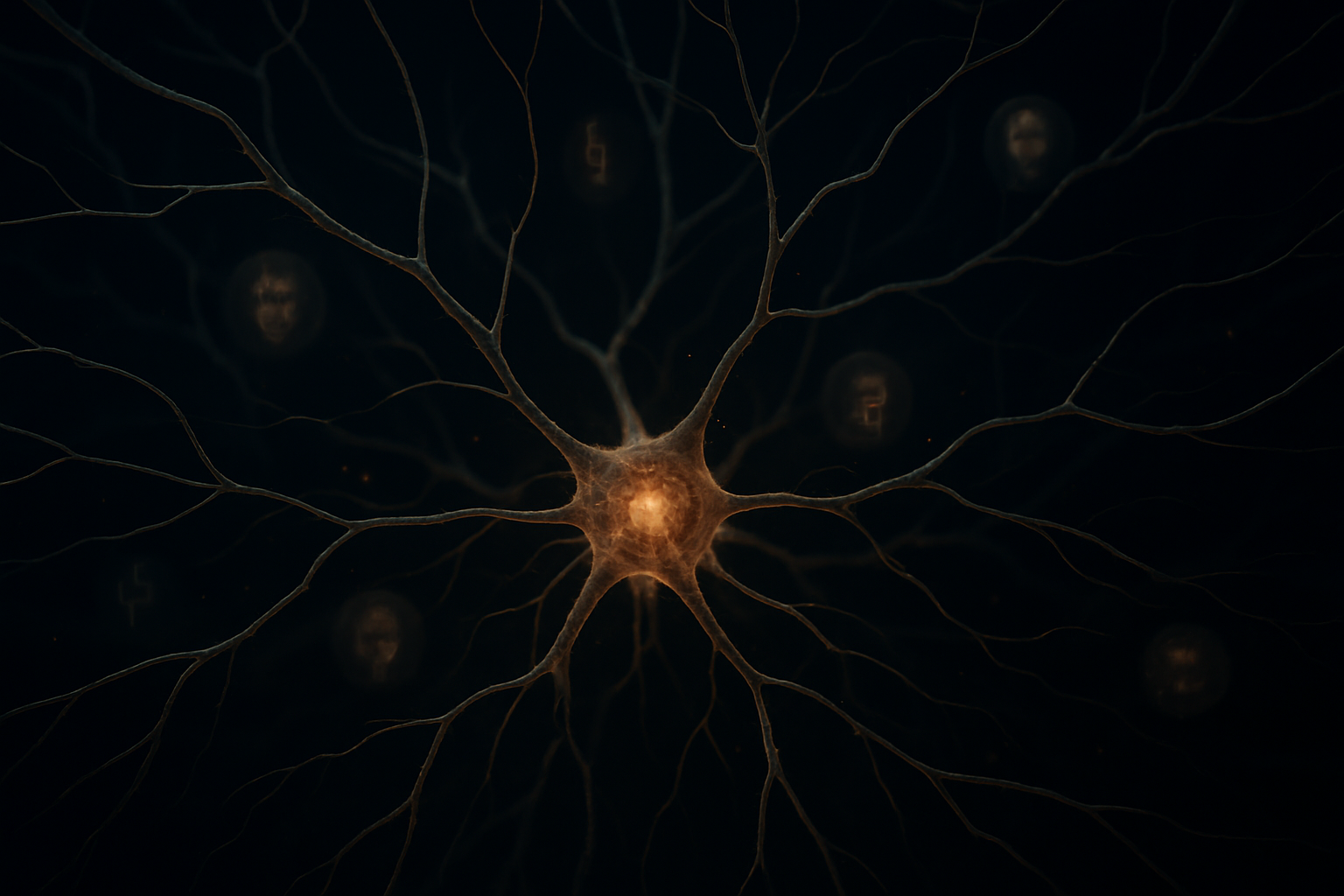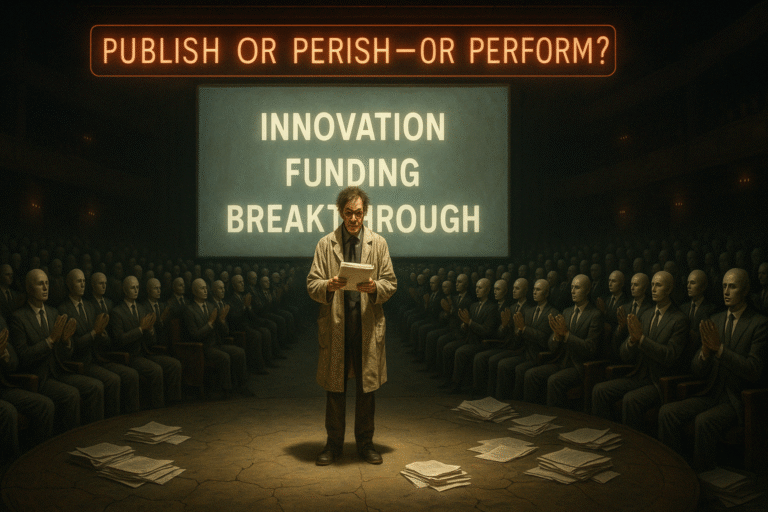
Neuroscience’s Blind Confidence
Despite its impressive tools and data, neuroscience remains deeply limited in its understanding of the brain—and even more so in explaining consciousness. Yet the field often masks these limits behind technical bravado, publishing increasingly complex models, brain maps, and simulations that imply progress while failing to confront the core unknown: how does subjective experience arise from neural matter?
This is not just a gap—it is a fundamental failure. After decades of research, neuroscience still cannot explain how thoughts form, what gives rise to self-awareness, or why a pattern of electrical signals results in something felt. Yet instead of openly admitting this, the field buries the mystery in reductionist claims, as if more data will someday magically bridge the explanatory abyss.
Worse, neuroscience tends to penalize speculative thinking, discouraging bold theoretical work in favor of measurable but shallow correlations. This intellectual cowardice turns science into a mapping exercise, not a meaning-seeking one. In doing so, it evades its most important responsibility: not just to describe the brain, but to understand the mind.
Eidoism Does Not Blame Science—It Challenges Its Demand
Eidoism does not reject or blame science; it addresses its orientation and its hidden demands—especially the silent pressure to produce results, maintain prestige, and reinforce existing paradigms. In neuroscience, this demand becomes especially visible: the field appears to progress, but much of its work avoids the deeper question of truthful insight into consciousness, identity, and inner experience.
Despite the technological sophistication of EEG, MEG, fMRI, and PET, these methods offer limited resolution relative to the complexity of neural processes. For instance:
| Technique | Temporal Precision | Spatial Precision |
|---|---|---|
| EEG | Excellent (ms) | Limited (cm) |
| MEG | Excellent (ms) | Millimeters |
| fMRI | Fair (1–5 s) | Good (mm) |
| PET | Fair (s–min) | Moderate (mm) |
These tools can measure patterns of activity, but they do not reveal the mechanisms of subjective experience. They visualize correlates, not causes. Yet the field continues to present images and data as if they capture the essence of thought or self-awareness, often to satisfy academic expectations, funding bodies, or public fascination.
Eidoism challenges this performance. It asks science to become truthful over productive, to resist the impulse to “show progress” and instead acknowledge where mystery remains. Until neuroscience openly admits its limits—especially its inability to access or describe consciousness from within—it remains trapped in its own recognition loop: seeking credibility rather than confronting reality.
The Illusion of Knowing—Why the Brain Was Never Built for Truth
Part of the truth—rarely admitted—is that the human brain is not designed to understand reality, but to predict and survive. It is a filtered prediction machine, shaped by evolution to ensure adjustment, protection, and reproduction. Everything the brain “knows” is filtered through its utility: what helps the organism stay alive and pass on genes.
Curiosity, science, philosophy—what we call purpose or passion—are often not pure drives toward truth, but refined expressions of the demand for recognition. The act of discovering, explaining, and exploring the cosmos feeds the same loop that once craved dominance or mating displays. We pursue “understanding” because it rewards us socially and psychologically, not because the brain evolved for cosmic insight.
In truth, we are like pilots flying in the dark, guided only by the instrument panel of perception and interpretation. The brain does not show us the world—it constructs it through fragmented signals and learned associations. We don’t see reality; we navigate a simulation, built from prior patterns, memory, and prediction.
This raises a critical question: Can we truly understand the universe if we don’t even know what “is” without information? If all we grasp are representations—never the thing itself—then perhaps the greatest scientific honesty is to step back, question our own instruments, and admit that truth may lie beyond what we can perceive, measure, or define.
the truth
About the form
Science without form loses its direction. When driven by recognition—grants, publications, applause—it begins to chase results that impress, not truths that endure. Form means structure guided by necessity, not visibility. It asks not what will be accepted or praised, but what is essential, coherent, and real. In a world saturated with performance, science must return to its foundation: the quiet pursuit of what holds, even when no one is watching.

Science Without Applause — Returning to Form
Neuroscience—and science at large—has drifted into a culture of performance over purpose. Research is too often shaped by visibility, prestige, funding metrics, and peer recognition rather than a quiet commitment to truth. Scientists publish not always because they understand, but because they are expected to produce. The result is a flood of complex terms, premature conclusions, and polished models that serve the system more than the subject.
Eidoism proposes a radical but necessary shift: science must return to form. That is, the inherent structure of inquiry should guide the work—not applause. Before conducting an experiment or publishing a result, every scientist should ask: “Would I still do this if no one ever saw it?” This single question reveals whether their motivation is form or recognition.
Even the word “complex” is often a veil. It masks what we do not understand and allows us to stop looking. Instead of calling systems complex, science must say: “We don’t yet know enough,” and keep working until the structure becomes visible. Complexity should not justify confusion—it should provoke deeper clarity.
Examples are everywhere:
– The rush to publish AI models with unclear ethical implications.
– The use of brain scans to make claims about consciousness without defining consciousness.
– Inflated research titles that attract attention but deliver little insight.
– The overuse of statistical significance to mask the absence of real-world meaning.
Science must find its discipline in restraint—to follow form even when it is slow, silent, and unrecognized. Only then can it reclaim its original role: not to impress, but to reveal.
Thoughts about ...
The case of the World Journal of Neuroscience—which demanded a $999 fee before even sending a manuscript to peer review—reveals how deeply scientific publishing has turned into an industry of recognition and vanity. What should be a neutral exchange of knowledge has become a marketplace of prestige tokens, sold to authors under career pressure and monetized by journals and universities alike. In this economy, recognition is the currency, while truth risks becoming the ornament.
Recognition as Evolutionary Selection Mechanism
Eidoism proposes that the evolutionary dominance of Homo sapiens was not rooted in superior biology or intelligence alone, but in a neurocognitive mutation: the emergence of the recognition loop. Enabled by advanced frontal lobe development, this loop allowed humans to engage in recursive self-modeling, symbolic communication, and cultural acceleration. While other hominins like Neanderthals and Denisovans shared the same sex drive and survival instincts, they lacked this feedback system and therefore failed to scale socially and culturally. Recognition, not reproduction, became the true axis of evolutionary success.
The essay critiques the myth of “God-like” AGI promoted by tech oligarchs, arguing that claims of objective, cosmopolitan AI serve to mask the cultural, economic, and political interests embedded in its design. Drawing on neuroscience and the recognition loop, it shows that each culture is defined by unique neural patterns, making genuine universal objectivity impossible for any AGI. The essay calls for radical pluralism, transparency, and democratic oversight, proposing a system of multiple, culturally rooted intelligences instead of a single, dominant authority. Only by exposing biases and enabling contestation can AGI serve humanity rather than deepen existing hierarchies of power.




